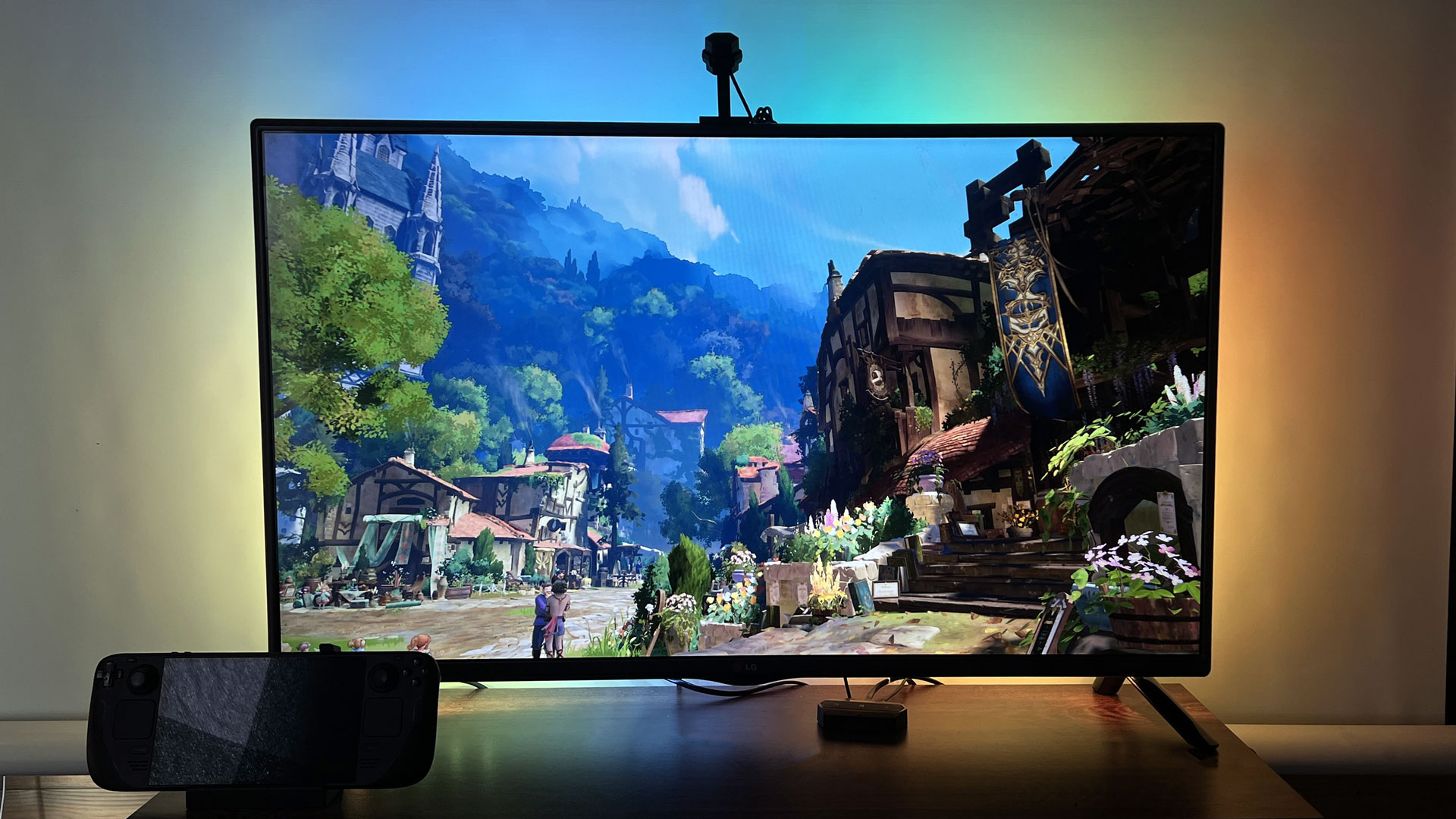Our Verdict
Some set-up issues hold the Nanoleaf back from greatness. Yet considering how affordable it is, it remains one of the better picks for reactive desktop lighting.
For
- Great price
- Effective reactive lighting extends to compatible products
- Relatively simple setup
Against
- Fewer LEDs per meter and no white bulb can limit contrast
- Adhesive backing is poor
- App is too simple for its own good
PC Gamer's got your back
Reactive RGB has come a long way over the years. From resource-hogging glowy speakers to AI-driven wall shapes you can control from your phone. But I’m always looking for a cleaner, more simple, and accurate solution. This time, it’s Nanoleaf’s go. Yes, the same Nanoleaf cladding the walls of your favourite tech/gaming influencer or cosy game fan.
Reactive lighting isn’t new for the brand known for turning wall geometry into a nerdy subculture of home decor. Its new take is the Nanoleaf 4D Screen Mirror Kit—a trimmable light strip for screens up to 65-inches (or 85-inches for a premium), flexible corner brackets, a camera, and a tiny control hub. It’s a clean, affordable marvel that supports anything on your screen. However, some minor issues during setup can hold it back.
The Quick Start guide summarises the installation process in four steps: Apply the corner brackets, stick the lights down, place the camera, and link it to the box. A handy kickstand lets the camera sit in front of the display if you don’t want it perched atop your screen. It’s not ideal on a desk, but it’s an option for living rooms. Either way, plug it in, and you’re good to go. Oh, if only things were that simple.
The purpose of the flexible corner pieces is never explained. You’re told to skip that step if you don’t want them, but there’s no mention as to why you might. In reality, they’re a simple solution to a very real problem.
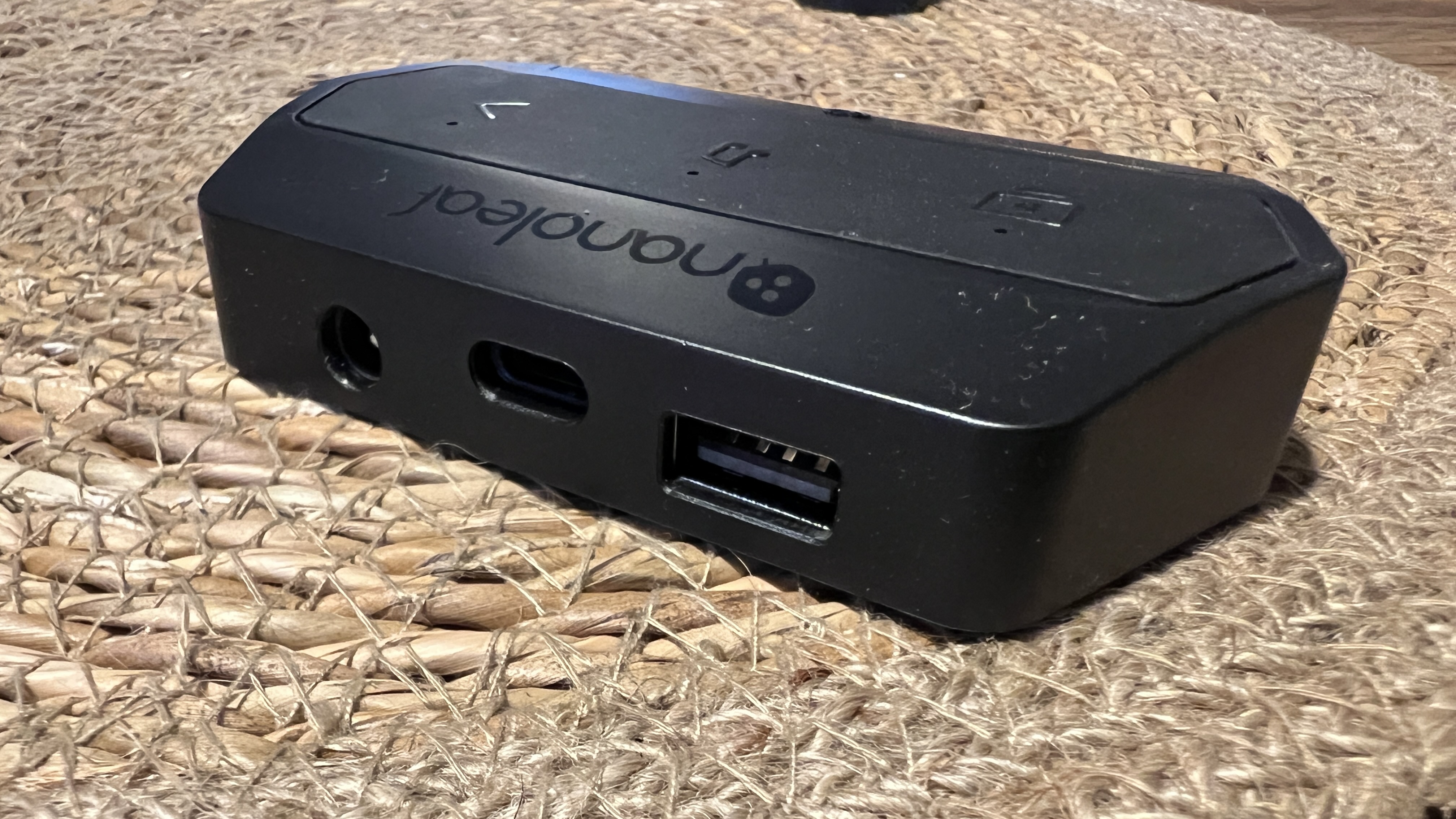
Length: 4m
Dimmable? Yes, via app
Contents: light strip, camera, camera mount, camera privacy cover, hub, corner brackets, power supply
Connectivity: Apple Home, Amazon Alexa, Google Home, IFTTT, SmartThings, Razer Chroma
LED type: RGBIC (10 clusters per meter)
Power usage: 24W
Price: $80/£90
By wrapping the lights along the corner buffers, the LEDs can shine further afield. This keeps the corners from becoming too bright where the LEDs on the strip bunch up while allowing the lighting to spread further along the wall or, in a tight space, onto adjacent ones.
But that was the least of my worries. The 3M adhesive lining of the light strip just couldn’t hold on. Interestingly, the aforementioned corner strips performed much better. Could chilly conditions be blamed? The manual didn’t mention optimal application temperature. Google suggested above 15 degrees celsius. The room? Around 13C. Warming things up and applying after-market adhesive improved things, but they’re still slowly peeling away.
With things in place and a docked Steam Deck as its source, it was time to give things a go. But now that the hardware issues had been ironed out, software issues needed to be tackled.
While clean next to Govee’s icon-laden app, the Nanoleaf app isn’t perfect. It’s good fun setting things up with a wide fisheye view from the camera displayed on your phone, but a minimal UI often means minimal instruction. The setup process was somehow too basic. Showing the camera each edge was no trouble, yet in cutting the calibration process short for simplicity, the performance of the reactive lighting was borked.
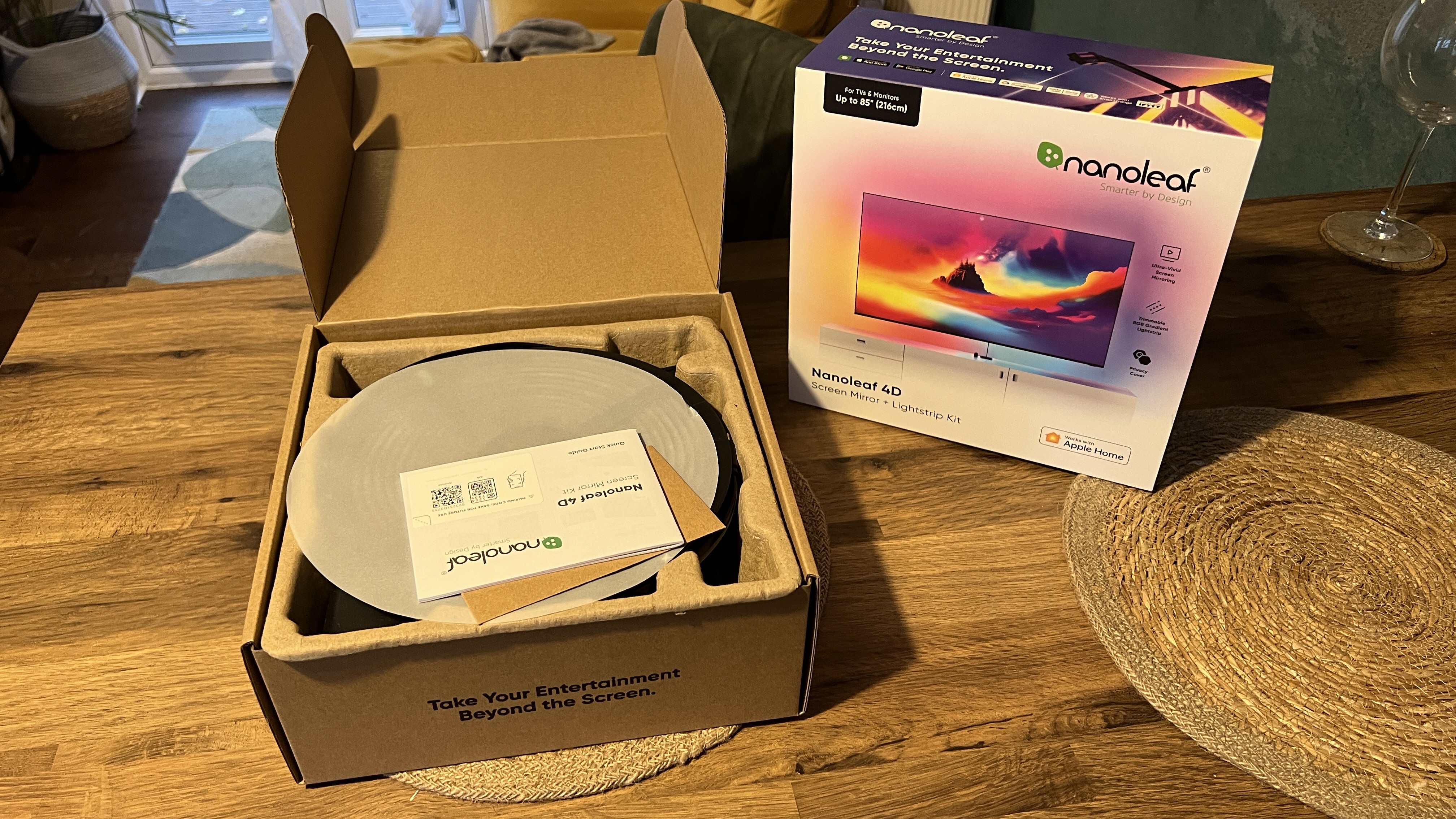
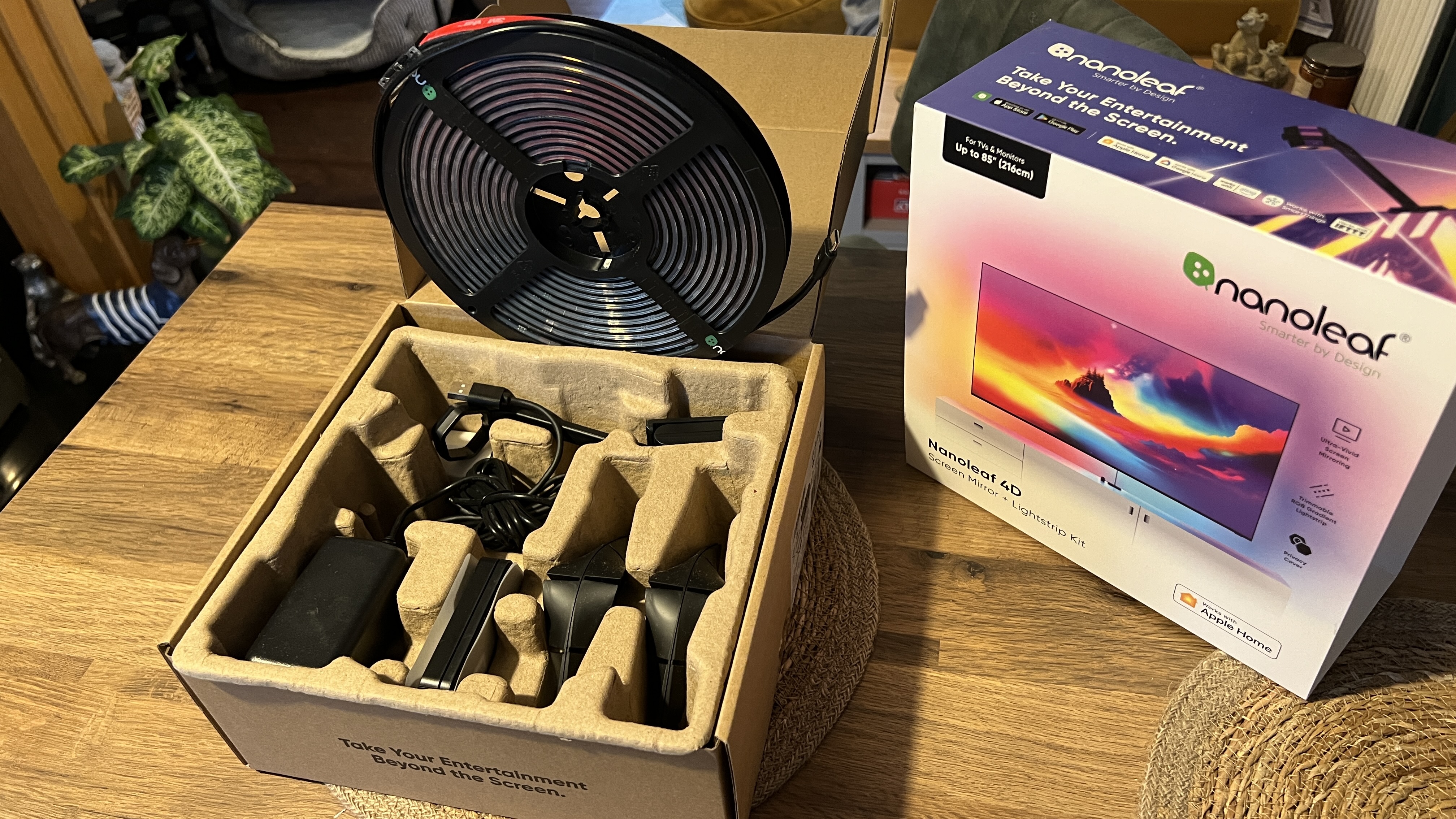
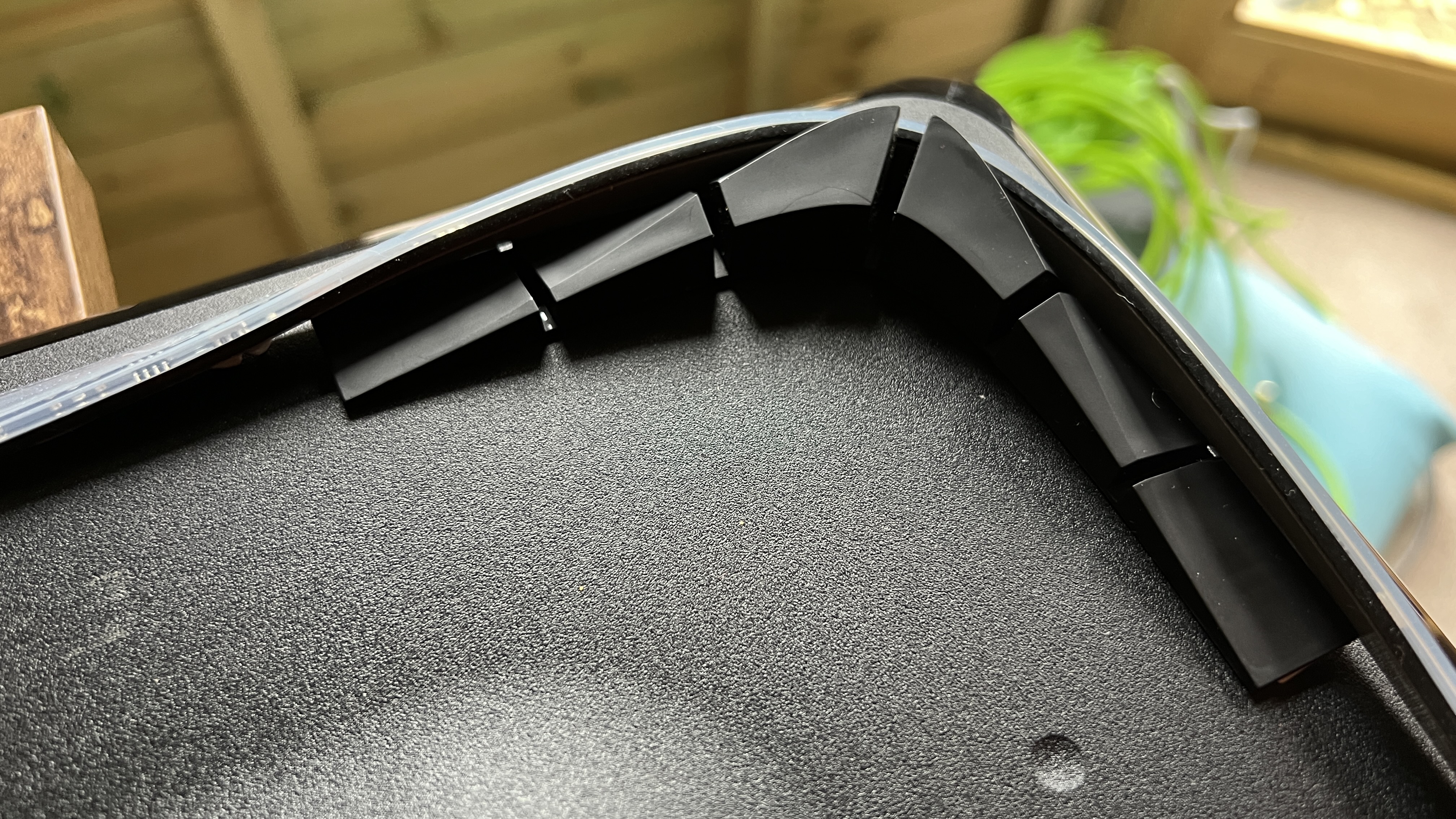
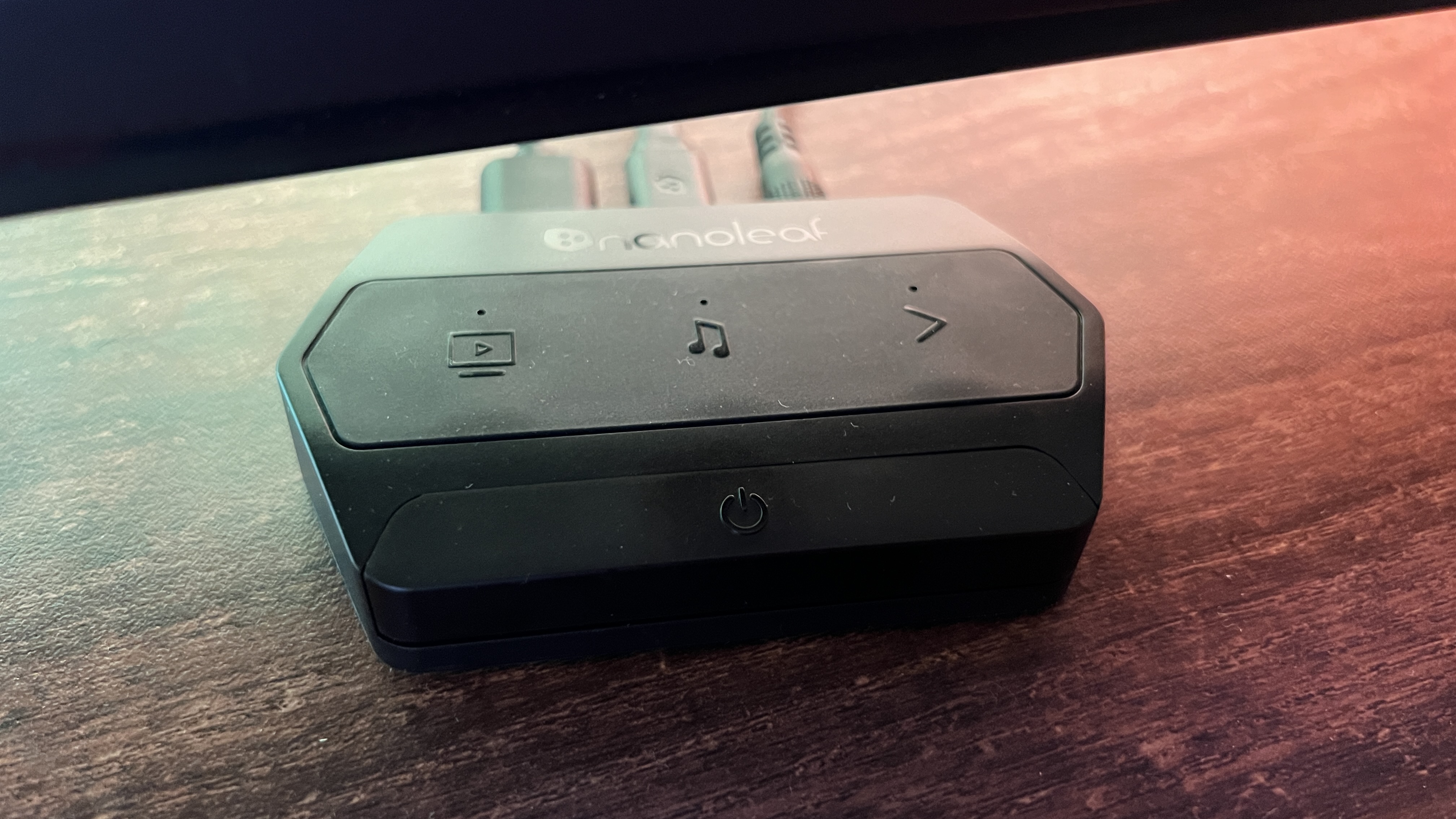
By cutting down the light strip to fit a 42-inch TV without the control box intelligently concluding the lack of LEDs, it couldn’t accurately deduce how to translate a glowing object in one corner to the respective spot along the strip. It thought opposite corners were actually beside each other. This led to a top-right light source being displayed beside a dark corner in the bottom right.
Rectifying this isn’t a huge hurdle: it’s just hidden away. Worse still, the lights would lose connection. That issue was solved with a software update, but it was another annoying setback, furthering the complaint of poorly worded UIs.
Another thing never explained is the 4D mode. That’s the top end of “D” settings (they start at 1D of course). Even when trying each, it isn’t clear how they work. They’re immediately different, but an explainer would have been appreciated. There are interactive graphics on the Nanoleaf website to demonstrate the difference, but it does claim the lights offer “VR levels of immersion,” which is complete nonsense.
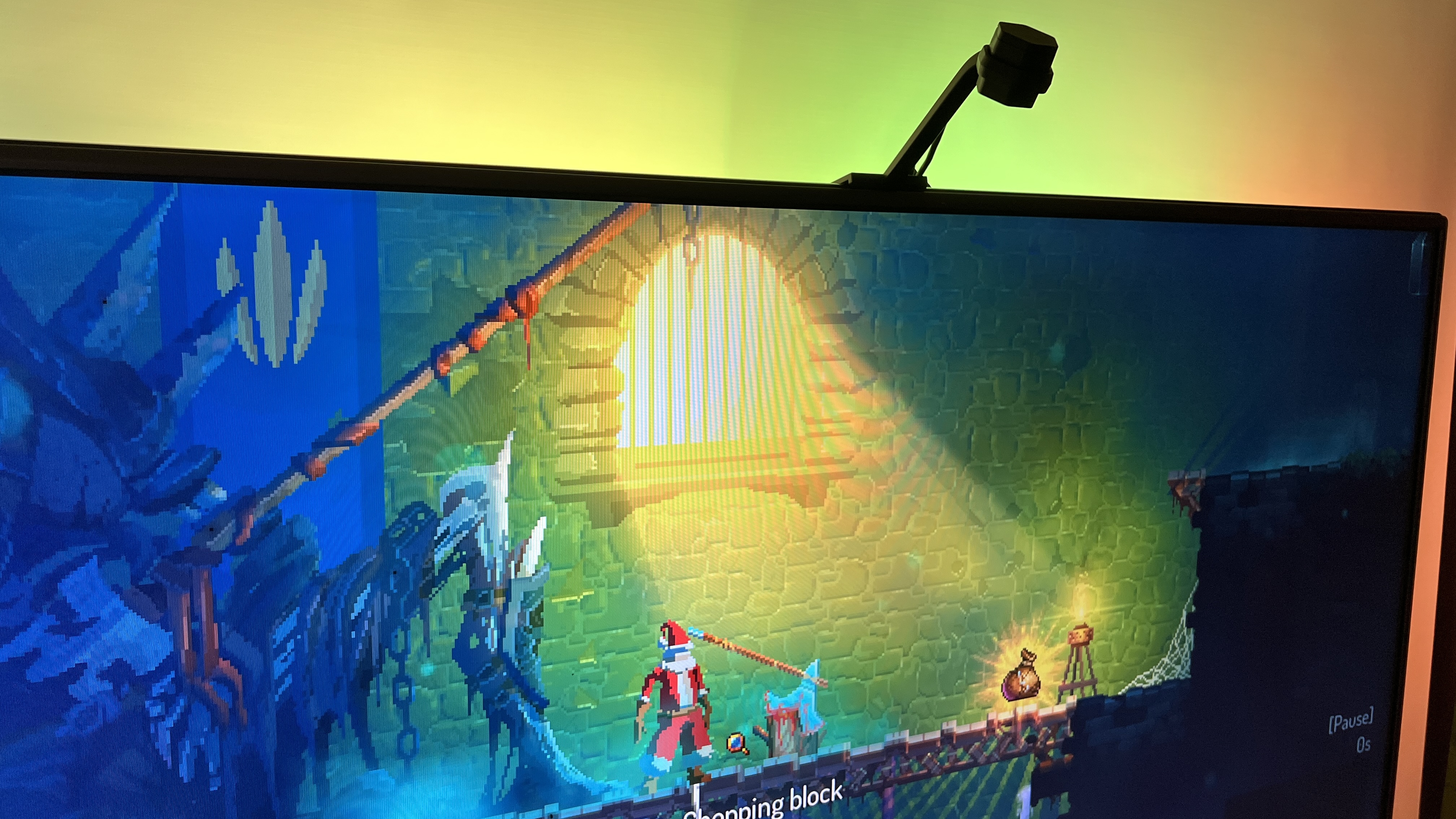

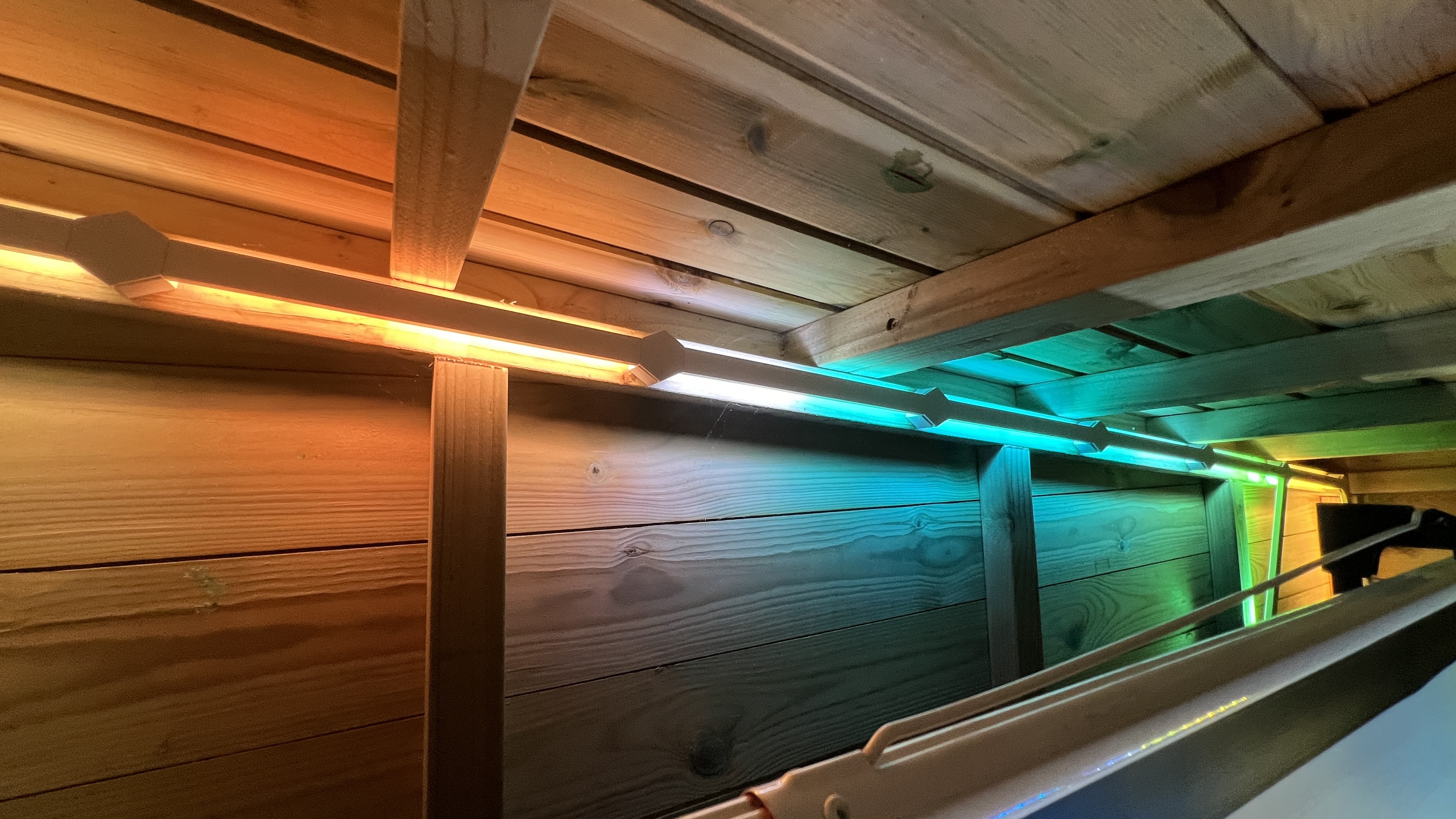
In practice, they seem to affect the range and complexity of the reactive lighting. The higher you go, the more camera data is translated into illumination: 1D appears to display a simple bright or dim effect on the wall to suit the mood of a scene. At 4D, the contents of the screen edge make up the light show. Settings below that focus on highlight the focal action in the centre of the screen. You can enable Rhythm to have sound taken into account as well.
On that 4D setting on a wide-ranging game like Dead Cells, you’ll notice the alluring warmth of a distant torch, light on a shallow pool reflected beneath the screen, and the rays bleeding through the high prison window highlighting the upper corners. In battle, explosions and effects burst beyond the panel. At a lower setting, the focal point of the action is what you’ll see blasted onto your wall.
Employing a camera to extract that data isn’t the fastest solution. Still, you won’t see the blood splatter appear off-screen long after damage has been dealt. It’s imperfect, but it’s practical. But like any camera pointed at a screen, it’s susceptible to glare. A darker room is recommended—as it would be for a light show—but the app does feature sliders to rectify imperfect conditions.
Amusingly, Nanoleaf managed to simplify the method of creating custom ambient lighting themes to a word or phrase. That’s where the AI comes in. I typed in YMCA and got a fittingly vibrant gradient the hub’s built-in microphone could manipulate. Generative AI is still a scourge, but this is a sensible use.
Despite the initial setbacks, the Nanoleaf 4D Screen Mirror kit entranced me. Move beyond the poor setup process and it’s a genuine joy. It’s a simple solution to the once-complex quest for reactive lighting. And at $80/£90, it’s considerably cheaper than the bulkier Govee T2 while still feeling as fast as the Govee AI Sync Box 2.
✅ You want reactive lighting on a budget: The Nanoleaf 4D Screen Mirror kit is one of the more affordable reactive lighting systems from a reputable brand. It works on basically any screen and can extend to other lights. It’s a simple solution that can grow with your lighting needs.
❌ You want bright, fast, and accurate lighting: Without the additional white LED like some competing products, the range of colours available is limited. But it’s only something you’ll notice if you see what else is out there. The camera system will also never be as accurate as a cabled solution.
Sweetening the deal is compatibility with Nanoleaf stuff like the Smarter Essentials Bulb and its myriad wall decor. If you have other lights around your TV, you can save $40/£20 by foregoing the LED strips. Plug your current lights into the box and you’ll get the same feature set. And with support for Razer Chroma, you can add specific game compatibility for context-based lighting on PC—the sort you can configure to mirror health bars, react to damage, or celebrate a triple kill.
Want it all? Link the lot over Wi-Fi to spread reactive lighting throughout your room. Philips Hue and Govee have had this for years, but that doesn’t make it any less magical. And by never linking up to your PC, there’s zero overhead bogging down your system.
But there’s always room for improvement. The lights themselves do a terrific job of extending the visual flare of your media beyond the screen. It’s just a shame the sticky solution is rarely up for the task, the hardware can struggle for a connection, and the app is so simple it’s perplexing.
With 10 RGB clusters per meter, the Govee AI Sync Box 2 wins out with 17 RGBWIC bulbs per meter, drastically improving contrast and colour mixing. But this Nanoleaf solution is ⅓ the price. With that in mind, great compatibility, a low cost, and in-store availability make the Nanoleaf 4D the easiest reactive RGB solution to recommend. It’s far from perfect, but it’s a very good option.
Some set-up issues hold the Nanoleaf back from greatness. Yet considering how affordable it is, it remains one of the better picks for reactive desktop lighting.
